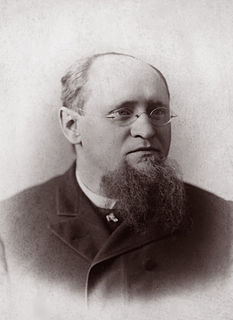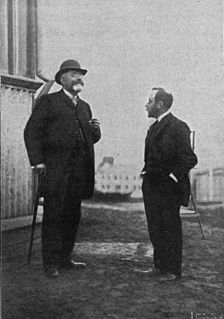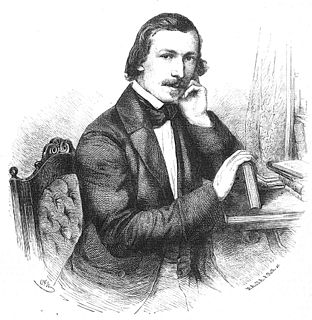Adolf Georg Pansch | |
|---|---|
 Adolf Georg Pansch | |
| Born | 2 March 1841 |
| Died | 14 August 1887 (aged 46) |
| Occupation | Naturalist |
| Parent(s) | Johann Heinrich Christian Pansch |
Adolf Pansch (2 March 1841, Eutin – 14 August 1887) was a German anatomist and naturalist.

Eutin is the district capital of Eastern Holstein county located in the northern German state of Schleswig-Holstein. As of 2015, the town had some 17,000 inhabitants.
Contents
Since 1860 he studied medicine and natural sciences in Berlin and Heidelberg, and from 1862 to 1864 he studied medicine in Berlin and Halle. After graduation, he served as a prosector in the anatomical museum at the University of Kiel, where in 1866 he began work as a lecturer to the faculty of medicine. [1]
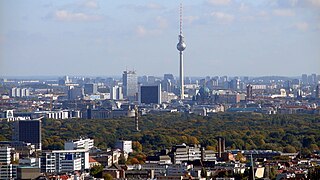
Berlin is the capital and largest city of Germany by both area and population. Its 3,748,148 (2018) inhabitants make it the second most populous city proper of the European Union after London. The city is one of Germany's 16 federal states. It is surrounded by the state of Brandenburg, and contiguous with its capital, Potsdam. The two cities are at the center of the Berlin-Brandenburg capital region, which is, with about six million inhabitants and an area of more than 30,000 km², Germany's third-largest metropolitan region after the Rhine-Ruhr and Rhine-Main regions.

Heidelberg is a university town in Baden-Württemberg situated on the river Neckar in south-west Germany. In the 2016 census, its population was 159,914, with roughly a quarter of its population being students.

A prosector is a person with the special task of preparing a dissection for demonstration, usually in medical schools or hospitals. Many important anatomists began their careers as prosectors working for lecturers and demonstrators in anatomy and pathology.
In 1869/70 he took part in the Second German North Polar Expedition, about which he published a few works involving the natural history of the Arctic. In 1874 he became an associate professor at the University of Kiel. He died at the age of 46 while on a sailboat excursion in Kieler Förde. [1] [2]

German North Polar Expedition was a short series of mid-19th century German expeditions to the Arctic. The aim was to explore the North Pole region and to brand the newly united, Prussian-led German Empire as a great power. In 1866, German geographer August Petermann wrote a pamphlet strongly advocating German participation in the international quest for the North Pole, which stimulated a German expedition.
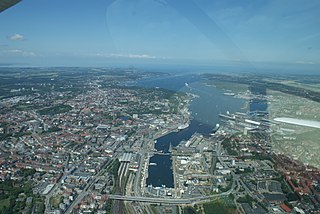
Kieler Förde is an approximately 17 km (11 mi) long inlet of the Baltic Sea on the eastern side of Schleswig-Holstein, Germany. Formed by glacial movement during the last Ice Age, it divides Danish Wold peninsula from Wagria. Like the other inlets of förde-type, geologically it is not a fjord. It originates at the Hörn in centre-city Kiel and merges into the Bay of Kiel.
His name is associated with "Pansch's flssure", being described as a cerebral fissure running from the lower extremity of the central fissure nearly to the end of the occipital lobe. [3]

The occipital lobe is one of the four major lobes of the cerebral cortex in the brain of mammals. The occipital lobe is the visual processing center of the mammalian brain containing most of the anatomical region of the visual cortex. The primary visual cortex is Brodmann area 17, commonly called V1. Human V1 is located on the medial side of the occipital lobe within the calcarine sulcus; the full extent of V1 often continues onto the posterior pole of the occipital lobe. V1 is often also called striate cortex because it can be identified by a large stripe of myelin, the Stria of Gennari. Visually driven regions outside V1 are called extrastriate cortex. There are many extrastriate regions, and these are specialized for different visual tasks, such as visuospatial processing, color differentiation, and motion perception. The name derives from the overlying occipital bone, which is named from the Latin ob, behind, and caput, the head. Bilateral lesions of the occipital lobe can lead to cortical blindness.






